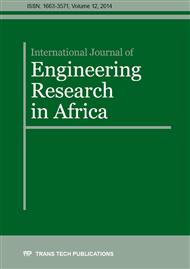p.1
p.15
p.25
p.35
p.43
p.53
p.67
p.83
p.95
Influence Factor Analysis of Multi-Stage Management Engineering for Multinational Micro Businesses: An Empirical Analysis Using Data Envelopment Analysis
Abstract:
In recent years, to a large extent the emergence and development of micro businesses has shown the gaps of comparative advantages between large and medium sized enterprises and small enterprises. Owing to its economics of scope in production, micro businesses contribute to the development and prosperity of the overall market. For the multinational micro business, it is exposed to associated micro political risks in a foreign market in different developing stages (i.e. startup, developing, and mature periods). However, literature review indicates that little work has been done to assess and manage the political risks of multinational micro businesses, let alone provide the multi-stage analysis. To address this problem, this paper develops a multi-stage data envelopment analysis (MSDEA) model to investigate the influence of micro political risks on the efficiency of multinational micro businesses. The main influence factors of the micro political risks in the host country in different stages of startup, developing, and mature periods have been modeled by the MSDEA, to provide new perspectives on the influence mechanism of micro political risk on the multinational micro business. Then the decision makers can assess their companies’ micro political risks in different stages and hence develop target-oriented risk prevention policies. Empirical analysis has been implemented in this paper, along with discussion of potential strategies on assessment and management of the micro political risks for multinational micro businesses. The analysis results demonstrate that the factor of labor conditions was the critical one in the development of the multinational micro business in the startup stage. Good labor conditions may be more likely to avoid micro political risk. The factor of the congruence with national economic interests and goals also impacted the development of the multinational micro business in the startup stage. Hence, the findings of this work could provide valuable reference for multinational micro businesses in restraining the micro political risk.
Info:
Periodical:
Pages:
15-24
Citation:
Online since:
June 2014
Price:
Сopyright:
© 2014 Trans Tech Publications Ltd. All Rights Reserved
Share:
Citation:


